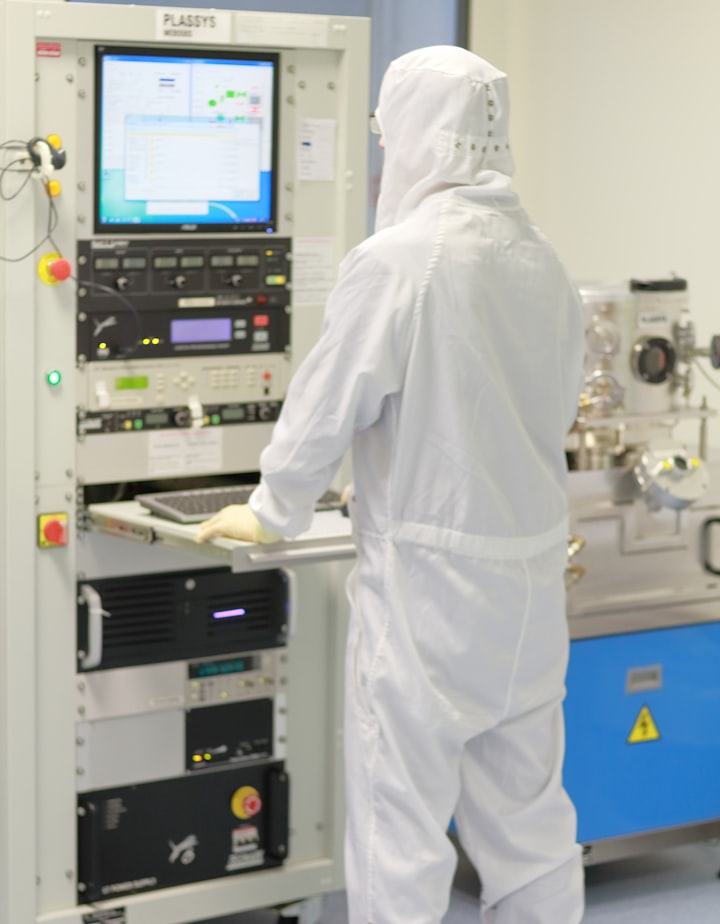Why Is Semiconductors Useful In The Production Of Devices
Why Is Semiconductors Useful In The Production Of Devices
Semiconductors are silicon materials and products that conduct electricity more like insulators like glass and less like pure conductors like copper and aluminum. Silicon is the most commonly used material in the production of semiconductors. Due to their unique electrical properties, semiconductors are often sued for the manufacture of electrical equipment.
Modern technology has enabled a class of materials called semiconductors. Semiconductors, also known as semi-finished products or chips, are found in thousands of products such as computers, smartphones, household appliances, gaming hardware and medical devices. Semiconductivity and other properties can be modified by introducing impurities (called doping) to meet the specific requirements of the electronic components they are located in.
Silicon wafers are the basic building materials for semiconductor devices and they are the basic components of electronic goods such as computers, telecommunications products and consumer electronics. Many everyday digital consumer products such as smartphones (smartphones), digital cameras, televisions, washing machines, refrigerators and LED lamps use semiconductors.
Semiconductor devices are electronic devices that exploit electronic properties of semiconductor materials such as silicon, germanium, gallium arsenide and organic semiconductors. The development of semiconductor technology over the last 50 years has made electronic devices smaller and more reliable than ever. Semiconductor devices had and are likely to have a key element in most electronic systems in the future, including communications, data processing, consumer, industrial and control devices.
Semiconductor devices use electronic conductivity in solid state as opposed to thermionic emission in high vacuum. Semiconductors work because semiconductors such as carbon, silicon and germanium have unique properties due to their electron structure. They are manufactured as discrete devices or integrated circuits consisting of a few billion devices produced by connecting a single semiconductor substrate to a wafer.
Semiconductors are defined by material properties and the ability to conduct small amounts of electrical current. At room temperature and under the influence of light, voltage and heat, semiconductors conduct current very well. Semiconductors have a low resistance to the flow of an electric current in one direction.
When metals conduct electricity, their free electrons move from atom to atom, but electricity requires the flow of electrons from one atom to another. Like pure silicon, semiconductors have fewer free electrons and act more like insulators. It is this quasi-state of being a conductor rather than an insulator that makes semiconductors important in electronic devices because they control the current flow.
It is obvious that semiconductors are used to produce light-emitting diodes. A semiconductor is a material with the conductivity of a conductor (metal) and a non-conductor (insulator) like most ceramics. Semiconductors are known to contain excitation electrons that emit light and generate heat.
Semiconductors are a class of crystalline solids with electrical conductivity between conductors and insulators. They are used in the fabrication of various types of electronic devices, including diodes, transistors and integrated circuits. Before 1947 and before the invention of bipolar transistors, semiconductor devices were used in two-terminal devices such as rectifiers and photodiodes.
Semiconductor devices with controlled conductivity are the building blocks of integrated circuits and microprocessors. These devices combine simple passive components such as semiconductor capacitors and resistors to produce a variety of electronic devices. The ability to control the conductivity of small defined regions of semiconductor materials through material doping and the application of electric fields has led to the development of a wide range of semiconductors and devices, in particular transistors.
With the advent of semiconductor materials, it has become possible to develop smaller electronic devices that are more refined, durable and compatible. The most common semiconductor device is transistor, which is used in digital circuits to make logic gates. The applications for semiconductor devices go beyond analog circuits with oscillators and amplifiers.
It would be difficult to find a modern device that consumes electricity and does not contain a semiconductor circuit. Silicon, the workhorse used in all kinds of computers and electronic devices, has its technical limitations, but engineers are increasingly looking for electronic devices to produce and process light. When most people hear "Silicon" or "Silicon Valley," they do not realize that it is just an example of an entire class of materials.
As the name suggests, semiconductors are materials that at some temperatures conduct electricity but not at others; most metals are conductive at all temperatures, while insulators such as glass, plastics and stones do not conduct electricity.
Good conductors such as copper and bad conductors such as glass lie between semiconductors and conductors. Elementary semiconductors consist in the periodic table of a single type of atom such as silicon (Si), germanium (Ge), tin (SN) (column IV) and selenium and tellurium (TE) (column VI). There are also numerous compound semiconductors that consist of two or more elements.
Semiconductor laser diodes, which are a type of DVD player and other common systems, use the same principle, but use special materials to create large band gaps. Laser diodes use heterostructures or interfaces between two different types of semiconductor materials that have chosen band gaps that are large enough. They use mirrors or other means to reflect the light emanating from these nodes to stimulate the laser effect.
Semiconductor diodes are the simplest type of electronic equipment and semiconductors are used in the manufacture of transistors, integrated circuits and many other types of electronic devices. In this article you will learn how semiconductor doping works and how diodes can be produced with semiconductors. A diode is the simplest semiconductor device and an excellent starting point for understanding how semiconductors work.
The P semiconductor is a type of extrinsic semiconductor which contains trivalent impurities such as boron and aluminum to increase the conductivity of normal silicon semiconductors. The semiconductor type N contains impurities that are added to the semiconductor using pentavalent impure atoms such as phosphorus, arsenic, antimony and bismuth.






Comments
There are no comments for this story
Be the first to respond and start the conversation.